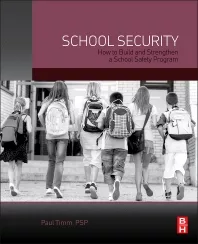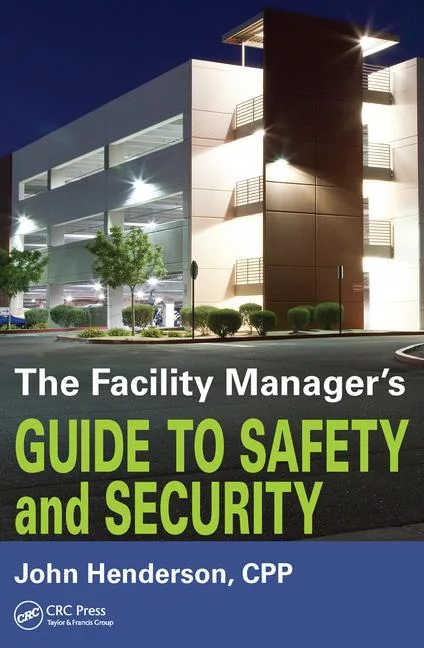10 Steps to Take When Terror Alert Rises
When the U.S. Department of Homeland Security (DHS) raises its Terror Alert Advisory, what exactly are businesses and government agencies to do?
It is expected that, early this year, the Homeland Security agency will more often raise the advisory to high and severe. At the same time, there is growing controversy over the actions to take in the face of changing, escalating advisories.
The Treadstone Group, a consultation and investigation firm in Denver, N.C., suggests ten measures to consider in responses to a high threat (orange) condition.
According to the DHS, a high condition is declared when there is a high risk of terrorist attacks. In addition to the protective measures taken in the previous threat conditions, Federal departments and agencies should consider the following general measures in addition to the agency-specific protective measures that they will develop and implement:
· Coordinating necessary security efforts with Federal, State and local law enforcement agencies or any National Guard or other appropriate armed forces organizations;
· Taking additional precautions at public events and possibly considering alternative venues or even cancellation;
· Preparing to execute contingency procedures, such as moving to an alternate site or dispersing their workforce; and
· Restricting threatened facility access to essential personnel only.
Here are ten steps from Treadstone’s President Ross Bulla, CPP, aimed at business and government facilities.
1. Access Controls
Reduce the number of facility entrances, both vehicular and pedestrian, to the absolute minimum that can be positively controlled by security personnel and physical and electronic security systems.
2. Better Screening
Conduct security screening of vehicles and visitors as remotely as possible. At a minimum, visually inspect storage and passenger compartments, and limits adjacent parking to those persons having a corporate ID. Screen visitors by requiring a valid, government-issued ID, having them register as they arrive and depart, wear a visitor pass, and be escorted by their employee host. Hand-carried items and bulky clothing should be removed and inspected.
3. Physical Barriers
Enforce a standoff zone of 100 to 300 feet, using bollards, barriers and barricades. Temporarily blocking potential access points with heavy equipment and large vehicles is an alternative, though they should be parked parallel to the route to resist ramming. Even minimal standoff zones will reduce the impact of an explosive device. This can sometimes be accomplished by prohibiting parking in the most adjacent spaces (curbside, front rows, street, etc.).
4. Control Visitors
Schedule all deliveries in advance, providing the vendor and their drivers with a unique code word or password, which should be printed on their manifests for comparison by the customers' security or receiving personnel. Refuse all non-scheduled deliveries.
5. Have Disaster Plans
Review current emergency policies and procedures and business continuity and recovery plans to ensure that they remain effective and well rehearsed. Update lists of persons requiring evacuation assistance and their work locations.
6. Practice Evacuations
To expedite mass evacuations, building owners and managers should practice evacuations in darkness, using only emergency power. This will allow people to identify obstacles and choke points that impede or slow escape. Improvements that help facilitate an evacuation include additional battery powered emergency lights; glow-in-the-dark instructional and directional signage; high visibility, light colored paint on walls; glow-in-the-dark paint on handrails and a continuous stripe down the middle of staircases; and the installation of a public address system in the stairwells. Consideration should be given to the exit location of stairwells. Stairs should avoid ending in the lobby; rather, they should exit to the street or other protected structure.
7. Chart Evac Routes
Identify primary and secondary evacuation routes and muster points, in the event that one or more routes become damaged, blocked or destroyed. Try to evacuate in a direction opposite of the threat, whether at your facility or another location along the evacuation route.
8. Keep Eyes Open
Nearly all terrorist attacks are preceded by surveillance and dry-runs at the target, often over several weeks or months. Training security and law enforcement personnel in counter-surveillance techniques is an important part of the security envelope. Attention should be paid to persons that seemingly have an unusual interest in the facility, particularly those persons who may videotape or photograph the site.
9. Cooperate with Officials
Meet with local, state and federal law enforcement agency administrators, fire and emergency medical authorities, emergency management, and other responding agencies. Pre-plan and coordinate the most effective and expeditious response to your facilities.
10. Get Outside Opinions
An independent security assessment and survey should be conducted at all government and private facilities. To avoid the perception of bias, government employees (law enforcement or risk managers) or contract security vendors (guard services and systems installers) should not undertake the official analysis. Outside experts unaffiliated with security vendors should be retained to provide an objective evaluation of security policies, procedures, and practices; in turn, making recommendations to enhance the security posture. The expertise, continuing education requirements, and demonstrated competency in the areas of security solutions and best-business practices through an intensive qualification and testing program make hiring a Certified Protection Professional (CPP) obligatory.
Although a terror attack is virtually impossible to prevent, basic security practices, combined with target hardening, can significantly reduce damage, injuries, and fatalities. According to Ross Bulla at Treadstone, pre-planning emergency response and responder safety is critical to the successful management of a terrorist incident, no matter the type. Life safety is the first priority, followed by the protection of property and the preservation of evidence. These actions may not prevent a terrorist attack, but the most certainly will help to mitigate disastrous results.
Looking for a reprint of this article?
From high-res PDFs to custom plaques, order your copy today!






